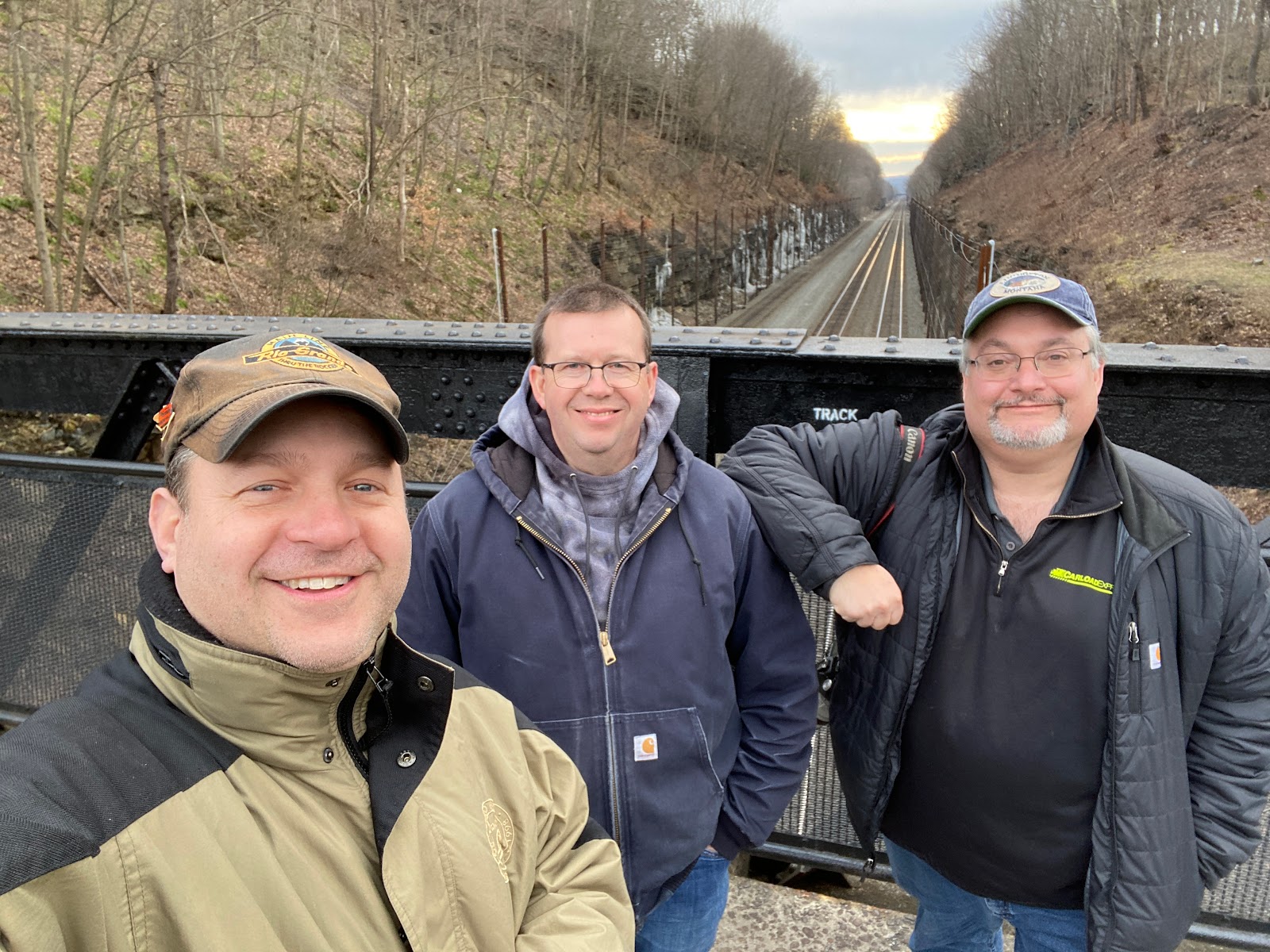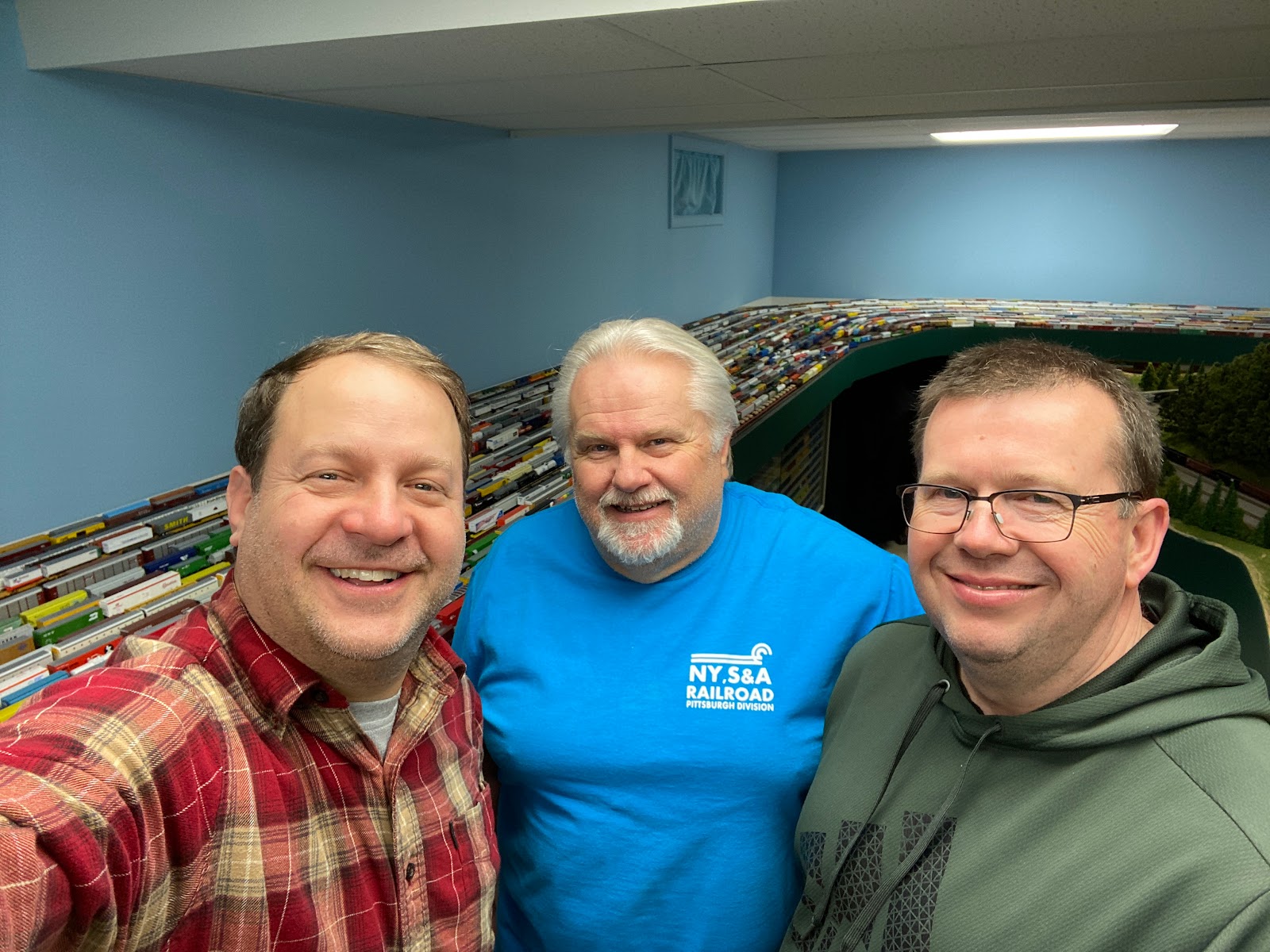We have discussed it before here on the OC blog: time is our most valuable resource. And time in your 40's is a fleeting thing. There never seems to be enough of it to handle all that comes our way. Family. Work. Hobby. Staying healthy. Some traveling.
In that light there are a lot of instances when it would feel more comfortable to stay at home and relax. However, people are important, and some of our precious time simply must be dedicated to others: spending time with old friends, with distant family, with people who are part of your team even if far away. And so I decided against odds at work and in lieu of sleep to depart at 0500 on a Thursday morning earlier this month from my friend Jon's home to attend 'Old Timers Weekend' at The Station Inn in Cresson, PA. OTW as we call it was created by the original innkeeper to bring his friends together, and now has been around for nearly 25 years. I am glad to have attended many of them.

Jon's idea this year was to railfan our way towards Cresson via Maryland, where we could photograph the Maryland Midland's operations. We found their rock train, with three big SD's in corporate parent Genesee & Wyoming paint: two former UP nee MP SD50s and a former SP SD45, rebuilt to an SD40-2 internally. Great lashup, and they wasted no time coming up the hill from the quarry south of Union Bridge, MD.
We chased the train to Union Bridge, a town built to be modeled! Jon's amazing ability to decipher radio lingo identified MMID train 'UBTT', the local from Union Bridge to Taneytown, MD - and low and behold he had the last remaining Maryland Midland GP38 leading! What a great start to this little trip.
After that we ended up heading west via county roads and U.S. Highways over the mountains towards Cresson. We hooked up with longtime friend Mike at Cassandra, PA, as the clouds moved in. Seeing great friends trackside at old haunts warms the soul.
A fun shot late at night was four of us trackside in Cresson as train 22X passed us headed east towards New Jersey. Bright lights from the inn made a neat silhouette of old buddies watching trains together again.
The next day brought the opportunity to meet some fellow railroaders, where Lou and I posed for a quick group shot in the tiny town. There are a lot of good people still working in railroading, and we have to take time to appreciate all of that when we can.
As we finished the trip, Jon and I stopped along our route home to visit Todd Treaster, a longtime Conrail and NS locomotive engineer at his home. He has a truly spectacular collection of N scale trains and his model railroad depicting his version of Enola Yard and the mainline west to Pittsburgh - his home territory. Jon and Todd traded stories and I was just happy to be there.
Sure, it was a quick and tiring trip, but in the end sleep we can get when we must and experiences like this come only once in a while - sometimes, only once, ever. I feel it is important to sometimes insist on going - to push the issue, so to speak. Thankfully my wife not only agrees but insists: prioritize experiences when we can. And I am grateful for such a wonderful community of friends that I can join on those adventures!






















